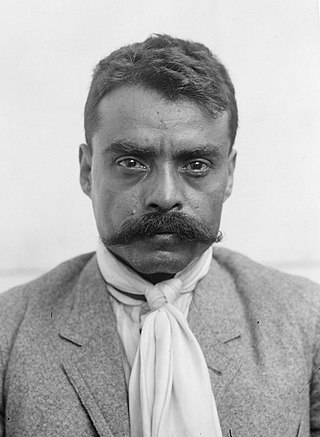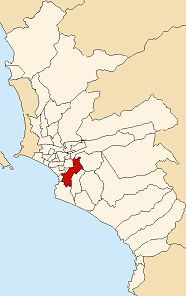Pedro Venturo Zapata (Owner/CEO 1925-1952)
(1925) Don Pedro Venturo Zapata acquired "The Hacienda Higuereta" from his father who died that same year. He led the Hacienda to serious levels of productivity of pisco, Brandy, Cognac, Champagne, red and white wine (Albilla Superior, Oporto, Moscato Dulce), Vermouth and other products such as balsamic vinegar, Grape Juice and Martini.
He also raised livestock finance, with over 300 holstein cows, 2 bulls named Ambrosio and Churchill, chickens, turkeys and pigs, They produced eggs, milk and meat for the community. Don Pedro Venturo was also one of the largest breeders of the Peruvian Paso Horse.
He was an honorary member of various labor organizations and he improved living conditions and planned social assistance, according to modern trends in his "Hacienda Higuereta", building houses for workers and employees; endowing the negotiation of sports fields, venue for film shows.
The Hacienda was in some ways a small town with homes for the employees and their families, a school, a movie theater with mezzanine for trusted employees, a park, a wood shed, a machine shop a pool, soccer fields, a chapel, a bodega, public restrooms and of course the buildings where the wine and pisco were crushed, distilled and aged.
Don Venturo worked with organizations to provide the population with the abundant food and elements of sports and healthy recreation.
He was a member of the Wine Committee of the National Agrarian Society and organizer of the Advisory Mission, in 1930, to study the law of alcoholic beverages and promotion of national viticulture.
He organized the first Harvest Festival in Peru called "La Vendimia", chairing the Organizing Committee in 1937 in Santiago de Surco. La Vendimia Wine Festival continues today.
(1956) The Hacienda Higuereta was located near an airfield, and in 1956, the unavoidable happened—a plane crashed on the grounds of the Hacienda during a practice run.

The politics of the Republic of Peru takes place in a framework of a unitary semi-presidential representative democratic republic, whereby the President of Peru is both head of state and head of government, and of a pluriform multi-party system. Executive power is exercised by the President and the Government. Legislative power is vested in both the Government and the Congress. The Judiciary is independent of the executive and the legislature. The Economist Intelligence Unit rated Peru a "hybrid regime" in 2022. Traditionally weak political parties saw their support collapse further in Peru since 2000, paving the way for the rise of personalist leaderships. The political parties in the congress of Peru are, according to political scientist Lucía Dammert, "agglomerations of individual and group interests more than solid and representative parties".

Emiliano Zapata Salazar was a Mexican revolutionary. He was a leading figure in the Mexican Revolution of 1910–1920, the main leader of the people's revolution in the Mexican state of Morelos, and the inspiration of the agrarian movement called Zapatismo.
Pisco is a colorless or yellowish-to-amber colored spirit produced in winemaking regions of Peru and Chile. Made by distilling fermented grape juice into a high-proof spirit, it was developed by 16th-century Spanish settlers as an alternative to orujo, a pomace brandy that was being imported from Spain. It had the advantages of being produced from abundant domestically grown fruit and reducing the volume of alcoholic beverages transported to remote locations.

The Peruvian Horse is a breed of light saddle horse known for its smooth ride. It is distinguished by a natural, four-beat, lateral gait called the paso llano. This breed is protected by the Peruvian government through Decree number 25919 of Peru enacted on November 28, 1992, and has been declared a Cultural Heritage of the Nation by the National Institute of Culture (INC). Due to the isolation suffered for about 400 years and the selection made by their breeders, this breed is very particular in their body proportions and an ambling gait or "paso llano" that is characteristic. It is typical of the northern Peruvian regions of the country from which it originated. Trujillo city is considered the cradle of typical Peruvian Horses.

Nazca is a city and system of valleys on the southern coast of Peru. It is also the largest existing city in the Nazca Province. The name is derived from the Nazca culture, which flourished in the area between 100 BC and AD 800. This culture was responsible for the Nazca Lines and the ceremonial city of Cahuachi. They also constructed additional underground aqueducts, named puquios, in a regional system that still functions today. The first puquios are believed to have been built by the preceding Paracas culture.

Manuel González de Candamo e Iriarte served as the 33rd President of Peru from 1903 until his death in 1904. He also served as Interim President of Peru, officially as the President of the Government Junta, from September 8, 1903, until his death the following year.
Ciudad Ayala is a city in the east-central part of the Mexican state of Morelos. It stands at 18°45′59″N98°59′05″W, at a mean height of 1,220 m (4,000 ft) above sea level. The city is named for Coronel Francisco Ayala (1760-1812) who fought with José María Morelos during the 1812 Siege of Cuautla. The town's previous name was Mapachtlan. Ayala became a municipality on April 17, 1869.

A pisco sour is an alcoholic cocktail of Peruvian origin that is traditional to Peruvian cuisine and Chilean cuisine. The drink's name comes from pisco, which is its base liquor, and the cocktail term sour, about sour citrus juice and sweetener components. The Peruvian pisco sour uses Peruvian pisco as the base liquor and adds freshly squeezed lime juice, simple syrup, ice, egg white, and Angostura bitters. The Chilean version is similar, but uses Chilean pisco and Pica lime, and excludes the bitters and egg white. Other variants of the cocktail include those created with fruits like pineapple or plants such as coca leaves.

Santiago de Surco, commonly known simply as Surco, is a district of Lima, Peru. It is bordered on the north with the district of Ate Vitarte and La Molina; on the east with San Juan de Miraflores, on the west with San Borja, Surquillo, Miraflores and Barranco, and on the south with Chorrillos.

The Hacienda San José is located in the District of El Carmen, in the Province of Chincha, in the Region of Ica, Perú. During a period, this manor house had one of the richest plantations in Chincha, with around 1000 slaves working on its fields.

Before the 1910 Mexican Revolution, most land in post-independence Mexico was owned by wealthy Mexicans and foreigners, with small holders and indigenous communities possessing little productive land. During the colonial era, the Spanish crown protected holdings of indigenous communities that were mostly engaged in subsistence agriculture to countervail the encomienda and repartimiento systems. In the 19th century, Mexican elites consolidated large landed estates (haciendas) in many parts of the country while small holders, many of whom were mixed-race mestizos, engaged with the commercial economy.

Manuel Palafox Ibarrola, known as El Ave Negra, was a Mexican military who participated in the Mexican Revolution with the title of general, as well as being the trusted emissary, personal secretary and one of the most close revolutionaries to Emiliano Zapata.

Mexican wine and wine making began with the arrival of the Spanish in the 16th century, when they brought vines from Europe to modern day Mexico, the oldest wine-growing region in the Americas. Although there were indigenous grapes before the Spanish conquest, the Spaniards found that Spanish grapevines also did very well in the colony of New Spain (Mexico) and by the 17th century wine exports from Spain to the New World fell. In 1699, Charles II of Spain prohibited wine making in Mexico, with the exception of wine for Church purposes. From then until Mexico’s Independence, wine was produced in Mexico only on a small scale.
Emilio Guimoye Hernandez (1891–1988/89) was a Peruvian agricultural entrepreneur who served as Minister of Economy and Finance from 1954 to 1955 for the Republic of Peru.
Pedro Manuel Venturo Zapata was an entrepreneur, engineer, agronomist, paso horse breeder, vintner and Minister of Agriculture. He was the CEO of Hacienda Higuereta y Anexos - Negociacion Vinicola Pedro Venturo S.A. from 1925 to 1952.
Grupo Breca, also known as Grupo Brescia, is a Peruvian business conglomerate founded more than 130 years ago with operations in Peru and other countries in Latin America. Fortunato Brescia and his wife, Mrs. María Catalina Cafferata, are the group's founders. Their last names Brescia and Cafferata gave rise to the "Breca" brand, which reflects the memory of its founders.

The Revolutionary Government of the Armed Forces was a military dictatorship that ruled Peru from 1968 to 1980 after a successful coup d'état by the Armed Forces of Peru.
José Carlos Gregorio Moreyra y Paz Soldán, was a Peruvian engineer and politician. He served as Minister of Public Works and Development (1939–1944), Second Vice President of the Republic (1956–1962), Minister of Agriculture and President of the Council of Ministers.
The Cornell-Peru project or the CPP was a development project conducted by anthropology students and professor Allan Holmberg from Cornell University from 1952 to 1966 at the Hacienda in Vicos Mountain in the Andes Highlands that housed members of the indigenous peasant class of Peru. It was one among several applied social science programs focused on agrarian and social reform at Cornell, and an early modernization experiment of the Cold War era. With the help of advisors from the Peruvian government, CPP provided the indigenas at the Hacienda, referred to as Viconsinos, with modernized healthcare, nutrition, education, language, farming techniques and agricultural methods that controversially eliminated their traditional culture.

The Agrarian Reform in Peru was a process of land reform redistribution initiated in the 1960s by struggles of rural workers (campesinos) for their land in the Cusco Region, and legally implemented under General Juan Velasco Alvarado in 1969 through three distinct laws. These land reform laws sought to redistribute large amounts of land that had once been owned by indigenous populations to the rural populations that lived and worked in the lands. The proposed laws promulgated in 1969 would attempt to change Peru´s agrarian infrastructure from being a system dominated by haciendas. Which was characterized by the semi-feudal relationships between haciendas owned by private Spanish patrones which employed peones, a large indigenous group, large cooperatives controlled by the Peruvian state, and areas of land owned indigenous communities that were recognized by the Peruvian government. The land reform was predominately focused on redistributing land from private haciendas to rural communities. For the former hacendados, the government of Peru issued agrarian bonds as compensation for land expropriation.












